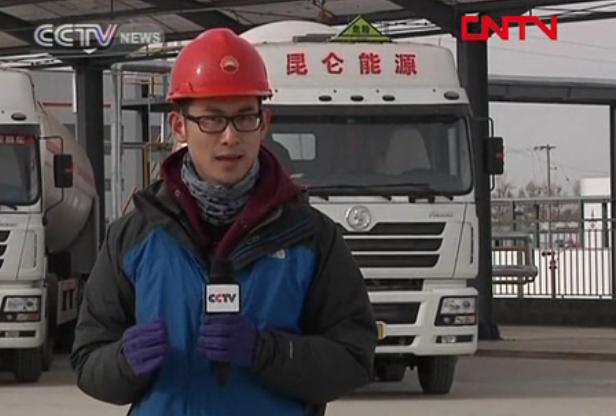The transportation of natural gas to Tibet starts in Golmud in the northwestern Qinghai province. There, natural gas is liquefied and readied for transport. CCTV reporter Tang Bo takes a look at how this greener energy source begins its journey.
Working for a greener future.
This factory in northwestern China’s Qinghai province is liquefying natural gas to be sent into the neighboring Tibet Autonomous Region. The factory workers ready the fuel for a 3 day trip to Lhasa.
Natural gas produces 85 percent less exhaust than petroleum and diesel, and has fewer emissions of harmful products like lead and benzene. And this is just one of the ways The China National Petroleum Corporation has been working to provide Tibet with cleaner energy.

CCTV reporter Tang Bo takes a look at how this greener energy source begins its journey.
Liu Jianqing, Deputy Manager of Qinghai Oilfiled of PetroChina,said, “The whole transportation plan is consisted of three phases. The first phase is to build up the liquefied natural gas factory in Golmud, and the natural gas station in Lhasa; the second phase is to change the energy consumption structure in Lhasa; and the last step is to expand the transportation network of LNG from Lhasa to the whole Tibet.”

The transportation of natural gas to Tibet starts in Golmud in the northwestern Qinghai province. There, natural gas is liquefied and readied for transport.
Tibet is in fact rich in natural gas. But environmentally friendly ways of extracting the gas have not been found, so at present it needs to come from outside sources.
Tang Bo said, “The factory liquefying natural gas is in the city of Golmud, the second largest city in northwestern China’s Qinghai province. Traditionally important for its waterway, the city has now become an essential green energy supply point, sending an important resource into Tibet.”
Golmud is a key juncture in western China - connecting the Tibet Autonomous Region, Xinjiang Uygur Autonomous Region, and Gansu province. More than 80% of goods moving in and out of Tibet go through here.
As the starting point of the liquefied natural gas transport, Golmud has stepped into the spotlight, as part of the efforts to provide Tibet with green energy, and a greener future.
